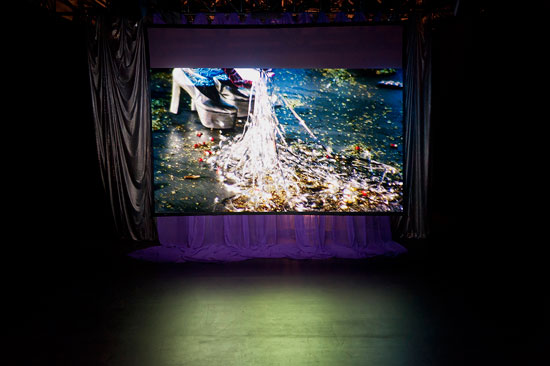(2012) by Pauline Boudry and Renate Lorenz, film installation, vitrine with fifteen photographs, curtain, theatre spots, Super 16mm, 13 minutes. Director of photography: Bernadette Paassen. Performers: Werner Hirsch, Ginger Brooks Takahashi.
Yvonne Rainer, Inner Appearences, 1972; Mierle Laderman Ukeles, 1979–80.
Kerstin Brandes, Fotografie und “Identität”. Visuelle Repräsentationspolitiken in künstlerischen Arbeiten der 1980er und 1990er Jahre (Bielefeld: transcript, 2010).
Today’s digital technology depends on toxic substances and working conditions in the production of cameras and computers.
Shawn Michelle Smith, Photography on the Color Line: W.E.B. Du Bois, Race, and Visual Culture (Durham and London: Duke University Press, 2004), 90.
Sara Ahmed, Strange Encounters: Embodied Others in Post-Coloniality (Routledge: London, New York 2000).
Gilles Deleuze and Félix Guattari, A Thousand Plateaus: Capitalism and Schizophrenia 2 (1980), trans. Brian Massumi (Minneapolis: University of Minnesota Press, 1987).
Ibid.; Gilles Deleuze, Desire and Pleasure (1977), trans. Melissa McMahon. For queer theoretical approaches, see Elspeth Probyn, Outside Belongings (London: Routledge, 1996); Elizabeth Grosz, “Refiguring Lesbian Desire,” Laura Doan (ed.), The Lesbian Postmodern(New York: NYU Press, 1994), 67–84; Chrysanthi Nigianni, Merl Storr (eds.), Deleuze and Queer Theory (Edinburgh: Edinburgh Univ. Press, 2009).
Margrit Shildrick, “Prosthetic Performativity: Deleuzian Connections and Queer Corporealities,” in Chrysanthi Nigianni and Merl Storr (eds.), ibid., 115–33, here 124.
Probyn, ibid., 43; Antke Engel, “Desire for/within Economic Transformation,” e-flux journal 17 (June 2010). See →.
Cf. Deleuze, Desire and Pleasure, ibid.; Michel Foucault, The History of Sexuality Vol. 1 (1976), trans. Robert Hurley (New York: Vintage, 1980); Probyn, ibid., 48.
Probyn, ibid., 59.
Ibid., 13.
Ibid., 59.
Ibid., 117.
Gilles Deleuze, Michel Foucault: Philosophe (Paris: Seuil,1989), 17; quoted in Probyn, ibid., 117.
Pauline Boudry and Renate Lorenz, Temporal Drag (Ostfildern: Hatje Cantz, 2011);
Elizabeth Povinelli, “The Part That Has No Part: Enjoyment, Law, and Loss,” GLQ: A Journal of Lesbian and Gay Studies Vol. 17, No. 2–3 (2011): 287–308.
Karen Barad describes a microorganism, a dinoflaggelate called Pfiesteria piscicida, which is neither plant nor animal, but able to change its nature according to the conditions of its environment. This microorganism, which is also called “killer dinoflagellate,” is responsible for a mass killing of over a billion fish. It is highly toxic for fish but, interestingly, this feature can only be proved in the presence of fish. Without being in contact with fish, no toxic nature or substance can be found. Cf. Karen Barad, “Nature’s Queer Performativity,” Qui Parle Vol. 19, No. 2 (2001): 133ff.
Mel Y. Chen, “Toxic Animacies, Inanimate Affections,” GLQ: A Journal of Lesbian and Gay Studies Vol. 17, No. 2–3 (2011): 265–286.
Chen, ibid., 274f.
Renate Lorenz, Queer Art: A Freak Theory (Bielefeld: Transcript Verlag, 2012).
Judith Butler, Undoing Gender (New York: Routledge, 2004).
Antke Engel, “The Surplus of Paradoxes: Queer/ing Images of Sexuality and Economy,” in Celine-Marie Pascale (ed.), Social Inequalities & The Politics of Representation: A Global Landscape (London: Sage, 2013), 176–188.
Chen, ibid., 281.
Ibid., 282.
Gilles Deleuze and Félix Guattari, What Is Philosophy?, trans. Bernd Schwibs and Joseph Vogl (New York: Columbia Univ. Press, 1994), 173.
Ibid.
Ibid., 278.
Chen, ibid., 279.
Povinelli, ibid., 302.
